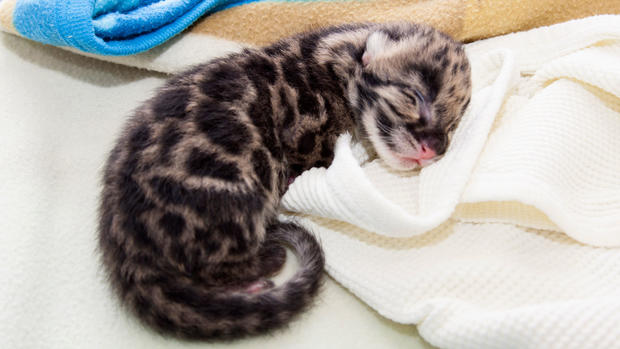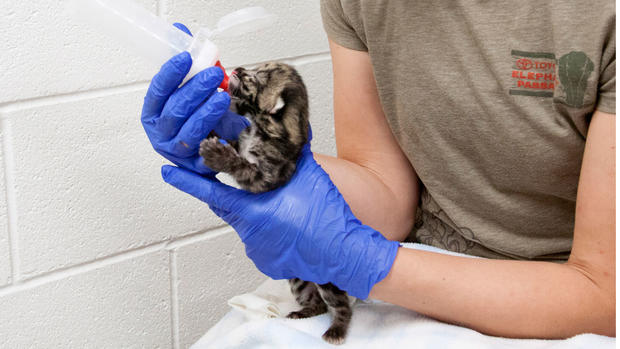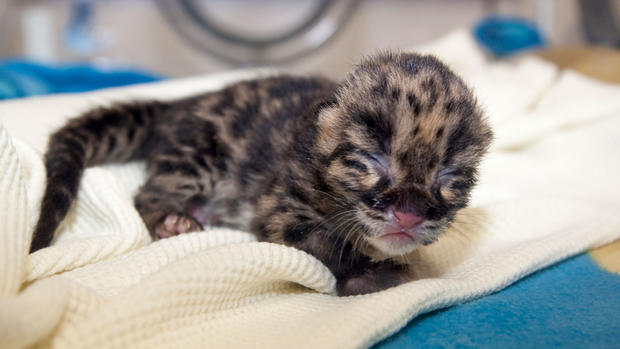Denver Zoo Welcomes Clouded Leopard Cubs
DENVER (CBS4)- The Denver Zoo is welcoming two clouded leopard cubs. The pair were born March 14 and will remain behind the scenes until they are a little older.
The unnamed cubs, a male and a female, are doing well after zookeepers began steps to hand-raise them.
Their mother, Lisu, gave birth to the cubs in a private birthing stall inside Toyota Elephant Passage but did not tend to them. Zookeepers believe this is because the first-time mother was hand-raised herself and lacks the experience to rear her own cubs.
After a few hours zookeepers moved the cubs to another building and began a protocol to provide food and medicine every three hours. They will remain behind the scenes until they grow older.
The cubs are not only the first births for Lisu but for her mate, Taji, as well. Lisu was born at Nashville Zoo in March 2011 and came to Denver Zoo that following November.
Taji was born at Tacoma, Washington's Point Defiance Zoo in June 2011 and also arrived that November.
The two were paired under recommendation of the Association of Zoos and Aquariums (AZA) Species Survival Plan (SSP), which ensures healthy populations and genetic diversity among zoo animals. Fortunately, the couple has proved to be an excellent match.
Despite their name, clouded leopards are not actually a species of leopard. Because they are so unique they are placed in their own genus, Neofelis, which is a combination of Greek and Latin words meaning "new cat." They are considered a "bridge" between typical big cats, like lions and tigers, and the small cats, like pumas, lynx and ocelots. Their body lengths can range from about two to almost four feet long and they can weigh between 24 and 50 pounds. Their tawny coats with distinctive "cloud-shaped" dark blotches provide excellent camouflage in their forest habitat, enabling them to stalk prey and also hide from potential predators.
Clouded leopards are well adapted for living in the trees. Their short, flexible legs, large feet and sharp, retractable claws make them adept in the trees. They can descend head first down tree trunks, move along branches while hanging upside down and even hang from branches using only their hind feet enabling them to drop down and ambush prey on the ground. Their long tails provides balance as they leap from branch to branch. Their arboreal lifestyle also provides protection from larger predators like tigers and leopards.
They are found in Southeast Asia in southern China, parts of Nepal, India, Burma and from Indochina to Sumatra and Borneo and live primarily in tropical and subtropical evergreen forests up to 6500 feet above sea level.
There are no reliable estimates for clouded leopard populations in the wild, but their numbers are thought to be in decline and the International Union for Conservation of Nature (IUCN) classifies them as "vulnerable." Clouded leopards are endangered primarily due to habitat loss due to deforestation for agriculture. They are also hunted for their beautiful pelts and their bones, claws and teeth are used in traditional Asian medicine.







